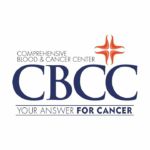
Understanding Breast Cancer: Risk Factors and Symptoms
Understanding Breast Cancer: Risk Factors, Symptoms, and Treatment Options
Breast cancer remains a significant health concern affecting millions of individuals globally. This is a thorough guide, where we will understand the various aspects of Breast Cancer, including risk factors, symptoms, stages, and treatment options. By understanding these key elements, individuals can empower themselves with knowledge of what Breast Cancer is, its awareness, promoting early detection and improved outcomes.
Risk Factors
The risk factors encompass a wide range of influences, including both genetic and lifestyle factors. While certain genetic mutations, such as BRCA1 and BRCA2 gene mutations, significantly increase the risk of cancer, other factors like age, gender, family history, hormonal factors, reproductive history, and environmental exposures also play a role. Additionally, lifestyle choices such as diet, physical activity level, alcohol consumption, and smoking habits can impact the risk. Understanding these risk factors allows individuals to take proactive steps towards risk reduction and prevention.
Family and reproductive history can also elevate one’s risk of cancer. Additionally, environmental exposures to carcinogens and radiation may contribute to increased risk.
By understanding these risk factors, individuals can adopt proactive measures to mitigate their risk and prioritise preventive strategies. This may include regular screening, lifestyle modifications such as maintaining a healthy weight, exercising regularly, limiting alcohol consumption, avoiding tobacco products, and discussing risk reduction options with healthcare providers.
Signs and Symptoms
Recognising the signs and symptoms of Breast Cancer is crucial for early detection and timely intervention. Common symptoms may include the presence of a lump or mass in the breast or underarm area, changes in breast size or shape, nipple discharge, nipple inversion, skin changes such as redness, swelling, or dimpling, and persistent breast pain or discomfort. It is important to note that not all breast changes indicate cancer, but any concerning symptoms should be promptly evaluated by a healthcare professional to rule out underlying issues.
Changes in the texture or appearance of the breast skin, such as puckering, ridges, or thickening, can also indicate the presence of the disease. It is crucial to be vigilant about any unusual changes in the breasts. Moreover, it is essential to recognise that cancer can manifest differently in different individuals, and some may experience no symptoms at all. This highlights the importance of regular breast self-exams, clinical breast exams by healthcare professionals, and recommended screening tests such as mammograms for early detection.
Stages
Breast Cancer is classified into different stages based on the size of the tumour, its extent of spread to nearby lymph nodes, and whether it has metastasised to distant organs. The stages range from 0 to IV, with stage 0 being non-invasive Ductal Carcinoma in Situ (DCIS) and stage IV indicating metastatic Breast Cancer. Understanding the stages of cancer is a crucial step for determining the appropriate treatment approach and predicting prognosis.
Treatments
Treatment options for Breast Cancer are multifaceted and may include a combination of surgery, chemotherapy, radiation therapy, hormone therapy, targeted therapy, and immunotherapy. The choice of treatment depends on various factors, including the stage and subtype of the disease, the individual’s overall health and preferences, and the presence of specific biomarkers. Personalised treatment plans are tailored to address the unique needs and circumstances of each patient, with the primary goals of eradicating cancer, preventing recurrence, and optimising quality of life.
Advancements in medical research and technology continue to expand the range of treatment options available for breast cancer patients. Let’s take a closer look at some of the primary treatment modalities:
Surgery
– Lumpectomy: Also known as breast-conserving surgery, this procedure involves removing the tumour and a small margin of surrounding healthy tissue.
– Mastectomy: In cases where the tumour is large or there are multiple tumours, the entire breast may need to be removed.
– Sentinel lymph node biopsy: This procedure involves removing a few lymph nodes to determine if cancer has spread beyond the breast.
Chemotherapy: Chemotherapy uses drugs to kill cancer cells or stop them from growing. It may be administered before surgery (neoadjuvant chemotherapy) to shrink the tumour, or after surgery (adjuvant chemotherapy) to kill any remaining cancer cells.
Radiation therapy: Radiation therapy uses high-energy rays to target and kill cancer cells. It is often used after surgery to destroy any remaining cancer cells in the breast, chest wall, or lymph nodes.
Hormone therapy: Hormone therapy is used to treat hormone receptor-positive breast cancer, which relies on hormones like oestrogen or progesterone to grow. It works by blocking the effects of these hormones or lowering their levels in the body.
Targeted therapy: Targeted therapy drugs specifically target cancer cells while sparing normal cells, resulting in fewer side effects. They may target specific molecules or pathways involved in cancer growth.
Immunotherapy: Immunotherapy harnesses the body’s immune system to fight cancer. It may be used in certain cases of breast cancer to stimulate the immune system to recognise and attack cancer cells.
The choice of treatment depends on several factors, including the stage and subtype of breast cancer, the presence of specific biomarkers (such as hormone receptor status and HER2/neu status), the individual’s overall health and preferences, and potential side effects.
Patients need to work closely with their healthcare team to develop a personalised treatment plan tailored to their unique needs and circumstances. Regular follow-up care and ongoing communication with healthcare providers are essential for monitoring progress, managing side effects, and addressing any concerns that may arise. Through collaborative efforts and personalised care, individuals with breast cancer can optimise their treatment outcomes and quality of life.
Breast Cancer is a complex and multifaceted disease that requires complete understanding and management. By getting familiarised with the risk factors, signs, symptoms, stages, and treatment options associated with Breast Cancer, individuals can take proactive steps towards early detection, effective treatment, and improved outcomes. Moreover, advocating for regular screenings, promoting healthy lifestyle choices, and supporting research efforts are integral components of Breast Cancer awareness and prevention initiatives.


